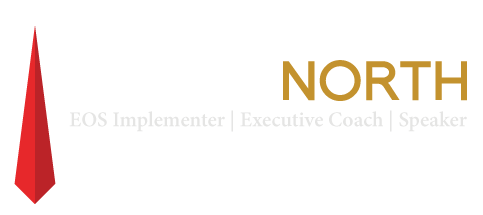Leadership attributes to survive tough times.
Tough times are defining moments in a leader’s career. Moments that result in greatness or mediocrity. Great leaders emerge in tough times, whether difficulty stems from economic conditions, merger or acquisition activity, product, service or customer problems, or even discontent or striking employees.
During tough times leaders … conceive a new vision, create belief in the new vision and transform employee fears into excitement. The following five leadership attributes and actions reveal how leaders take charge.
1. Take responsibility. Leaders step up and take responsibility for the condition of their organization, even when external factors impact it. Employees want to know that their leaders are strong — and brave enough to embrace and carry the weight of the challenge.
“The first thing we did as a management team was to confront the brutal fact that we were probably going to have to lay some people off. … It was stressful for people to hear, but I believe it was better for people to know the facts,” said Terry Gold, president of Gold Systems, a voice automation software company, which last fall faced a declining economy and slumping sales with direct communication and core-business-focused decision making. Taking full responsibility for the situation may be the most critical leadership attribute in tough times.
2. Establish a clear vision. “In difficult times people crave clear inspiring vision from their leadership for two reasons, one, it gives employees confidence in the future and, two, it allows employees to align their goals and behaviors with the success of the vision,” notes Mitchell Marks, a San Francisco-based management consultant and the author of “Joining Forces: Making One Plus One Equal Three in Mergers, Acquisitions, and Alliances.”
Your organization’s vision may or may not remain the same during troubled times. Regardless, leaders must define a vision clearly and have a goal structure suited for all levels of the organization. If the vision is significantly modified, then the goal structure for all levels of the organization must be modified to align people’s energy to achieve the vision.
As your corporate vision evolves, and if staff cuts are necessary, make cuts to align your resources and strategies. Too many organizations make cuts then define their new vision.
3. Tell the truth. What are the most important communication strategies and actions for leaders to perform during tough times to emerge as a stronger organization? Gold suggests that leaders “communicate honestly, quickly and as completely as possible.”
Chris Binkley, president of Kaiser Permanente Colorado, echoes Gold’s thoughts: “Communication is truly the key action/strategy to take. You have to be honest and open with your employees and when you have customers that depend on you, you have to be honest and open with them.”
The lesson these leaders offer is simple: Communication from all levels of leadership needs to be honest, frequent, congruent and timely to all stakeholders. This enhances trust during a time when distrust can reign and trust is a necessary leadership attribute in tough times.
4. Listen. Listen to employee and customer fears, pains and frustrations. It’s particularly important to address employee fears. When people are afraid, they put their energy into their fears and spread them, which leads to under performance.
At Kaiser, “We seek out information on what we don’t know or on what’s being said. If we hear people are talking about feared layoffs, we point out if layoffs are or aren’t in the future. There’s no sugar coating, because all that does is create false impressions,” Binkley notes.
To make changes, information about every aspect of the business must be collected. Listening, to knowledgeable people from all levels of the organization, provides leaders with data to make changes.
5. Balance short- and long-term needs. According to Mike Sausa, President of Boulder’s Spectra Logic Corp., “the greatest leadership challenge is always balancing the immediate needs of the business (i.e., survival) with the future need to maintain a dedicated, motivated team of people.”
Sausa recognizes that when times are tough, an important leadership attribute is maintaining a short-term focus, which has to be aligned with and support the long-term goals and strategies. Kaiser’s Binkley suggests a simple method for keeping everyone focused: Start with your own behavior.
“Model the strategy. Don’t just talk about a plan for change; model it. Live it.”
To live through troubled times and emerge as a stronger organization, you must create belief in the new vision, align actions with it and turn organizational fear into excitement. Turning fear into excitement, now that is an amazing leadership attribute!


